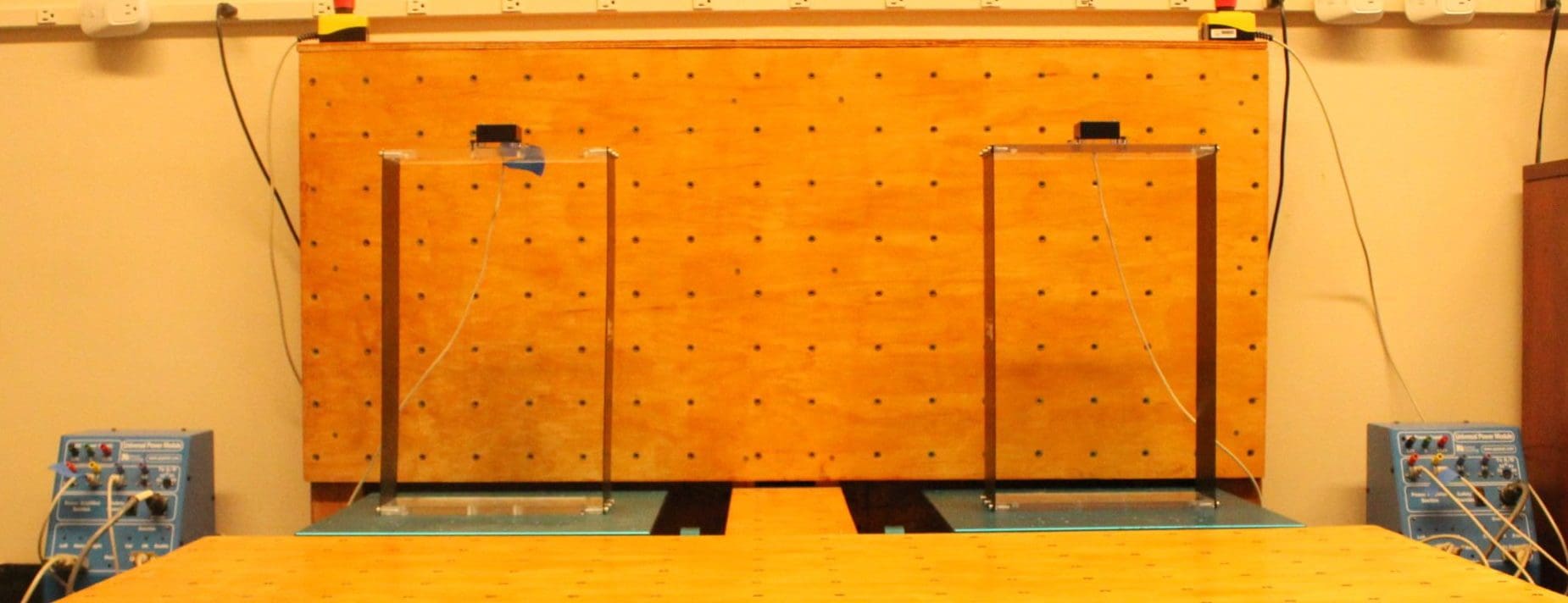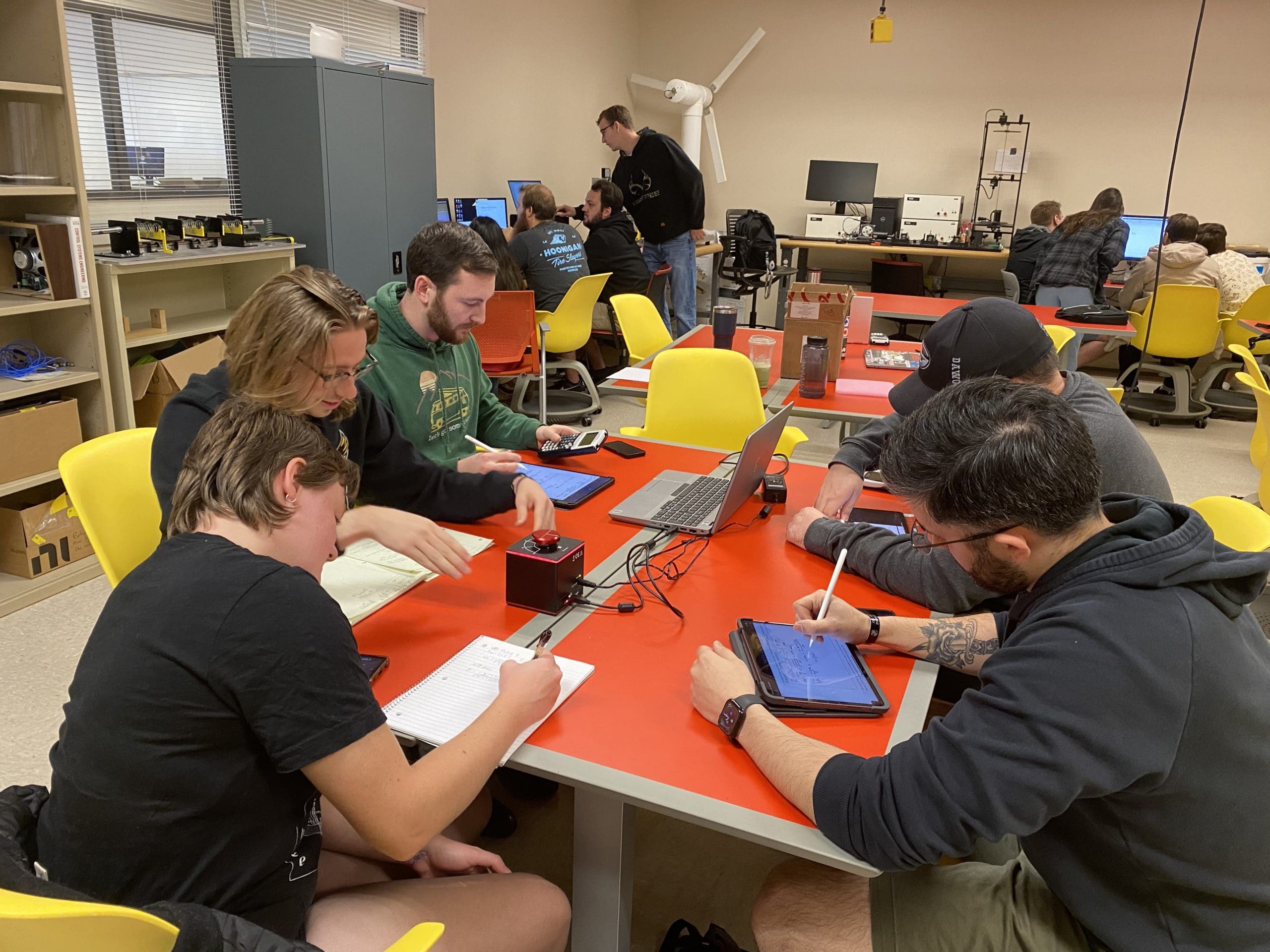
The School of Engineering at the San Francisco State University offers multiple courses in structural dynamics and vibrations to students of both civil and mechanical engineering. The courses cover advanced concepts and challenge students with a lot of theory, but in the past, provided little or no support through practical lab experience. Many students struggled with the course topics, how to connect them and relate them to real-life applications. As a result, the learning outcomes were not satisfactory, neither to students nor to their instructor.
Assistant Professor Dr. Zhaoshuo Jiang, being interested in both structural control and innovative engineering education, took up to redesign the courses. Bringing together modern pedagogy, a Shake Table earthquake simulator, and the qdex eLearning platform, he turned the courses into a success, significantly improving students’ learning outcomes and experiences.
Challenge
Theory, Practice, and Experimentation Crucial for Engineering Education
Dr. Jiang started to work on a course curriculum that would incorporate theory, practical examples and hands-on experiences. He wanted to ensure students got maximum access to the course content, even while away from the campus. On top of the materials covering the theory, he also wanted his students to practice how concepts applied in real-life scenarios, and give them practical hands-on experience with experiments in a lab. His idea won him the support of the Course Redesign with Technology, an initiative at the California State University to improve student success.
Solution
A Course that Combines Modern Pedagogy and Technology
Dr. Jiang started developing the courses, aligning the teaching style with the learning style of his students, the ‘digital natives’. Using Learning Glass technology, he prepared a set of review videos covering the prerequisite knowledge, as well as videos explaining the course topics. A telepresence robot turned his office hours into virtual meetings, saving commuting time to students.
The true game-changer came with implementing qdex, a unique STEM-focused mobile eLearning platform developed by Quanser. qdex allowed Dr. Jiang to transform conventional static learning materials into highly interactive educational modules accessible on smart mobile devices.
Dr. Jiang’s team of qdex developers consisted mostly of students with no previous coding, programming, or app development experience. However, after a short learning period, and using the rich library of Quanser-developed templates, they were able to create qdex modules covering bending, stress, torsion, and other advanced concepts.
Each qdex module included a study content with a review of the theory. To practice the concepts, students could use high-fidelity, interactive simulations with real-time responses. The ‘common concept map’ connected all the qdex modules, helping students to visualize relations between the concepts.
Practical Experimentation via Internet
Next, the team focused on reinforcing the theory with practical experimentation. Dr. Jiang’s lab already had two Quanser Shake Tables II, a de-facto standard academic platform for studying effects of ground excitation on materials and structures. But with the high enrollment in the courses and the limited lab time, it would be impossible to provide any meaningful hands-on experience to all the students.
Dr. Jiang had a previous experience with operating a Shake Table remotely. In an earlier effort to enhance earthquake engineering education, the University Consortium on Instructional Shake Tables (UCIST) partnered with the George E. Brown Network for Earthquake Engineering Simulation (NEES to develop a framework for remote participation and operation of the Shake Table II via the internet. Although the Remote Shake Table Lab (RSTLab) showed a great potential, over the years, the technological changes made the original concept obsolete. Dr. Jiang decided to resurrect the idea. He adopted the standard TCP/IP communication protocol and updated the RSTLab components. That resulted in a much easier setup process, moreover, enabled a connection to the Shake Table II through modern smart devices, from tablets to smartphones and, potentially, even wearable devices.
Mobile Remote Lab Meets qdex
The new Mobile RSTLab (mRSTLab) took full advantage of qdex capabilities. The SFSU team developed a module that allowed students to control the shake table remotely from their smart devices and receive sensor measurements in real time. The remote access to the Shake Table platform was first tested in the Mechanical and Structural Vibrations course. Students booked their lab session during which they got a full control of the Shake Table in the lab. Through the qdex module installed on their phones or tablets, they simply selected the desired input signal – sine wave, sine sweep or an earthquake input, and customized its value using sliders or toggles. The Shake Table test structure accelerometers measured their responses to the excitation and sent them automatically to the smart devices, so students could view the data in real time.
Simultaneously, students could also access and control a mobile robot in the lab. They could move the robot around the Shake Table setup to observe the experiment from different angles and to communicate with the lab assistant. The robot gave students a sense of presence and participation, and made the remote experiment feel hands-on and engaging.
Result
Helping Students Reach their Potential
The comparison of grades before and after the redesign of the Mechanics of Solids course speaks volumes. Although the results represent only one class, they are extremely encouraging and suggest the new pedagogical methods and technology improve learning outcomes in a significant way.
Dr. Jiang also conducted surveys, comparing students’ knowledge competence and their attitudes towards mobile learning before and after the course. According to the survey results, students felt their understanding of the critical concepts had improved. The highly interactive modules with simulations were instrumental in helping them visualize even the most complex concepts and get a better grasp of the topic.
Working with the qdex modules was enjoyable for most of the students, and they found them really easy to use. Students appreciated the access to the review and practice materials anywhere and anytime and found themselves using the qdex modules much more than anticipated.
Transforming Engineering Education at SFSU
For Dr. Jiang, the redesign of the courses was a very rewarding experience. He managed to marry modern pedagogical methods with the latest technology and develop forward-looking courses that reached their ultimate goals: achieve the learning objectives and make the learning engaging and absorbing. Dr. Jiang is now working on extending the remote access to mRSTLab through the qdex module to other universities. This will help further confirm the readiness of mobile learning and improve the modules to better serve the students.
Interested in testing the mRSTLab yourself?
Download the instructions on how to reserve a time to try it out: http://tinyurl.com/mRSTLab-Manu


